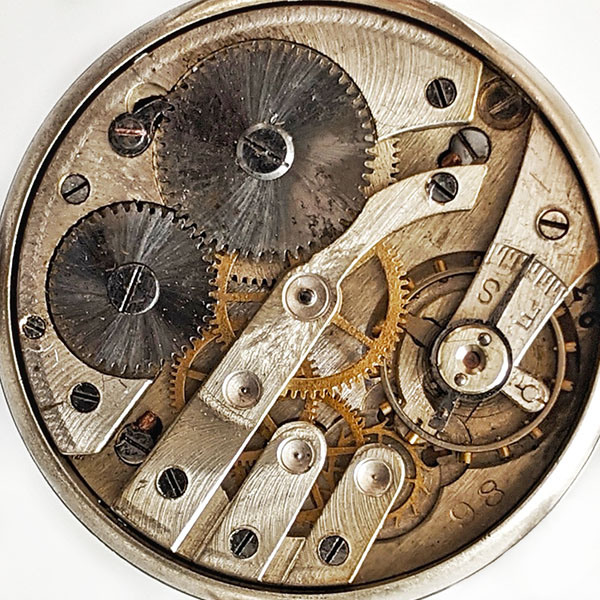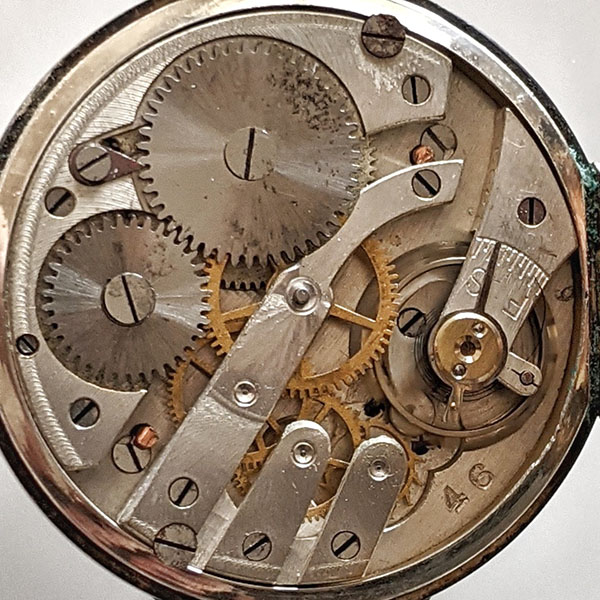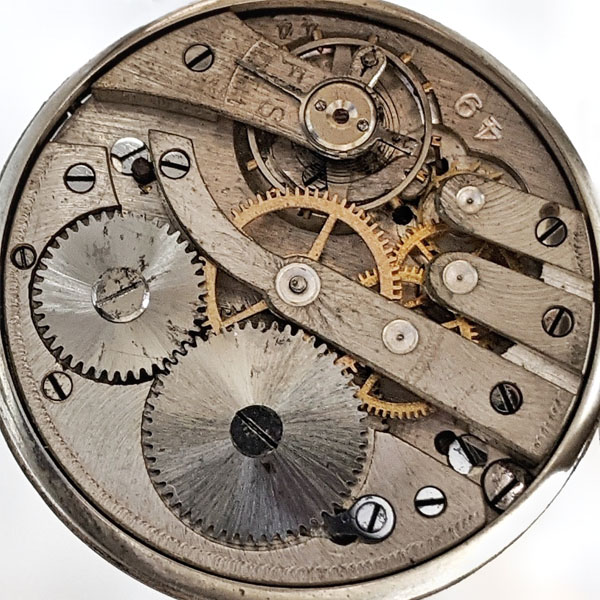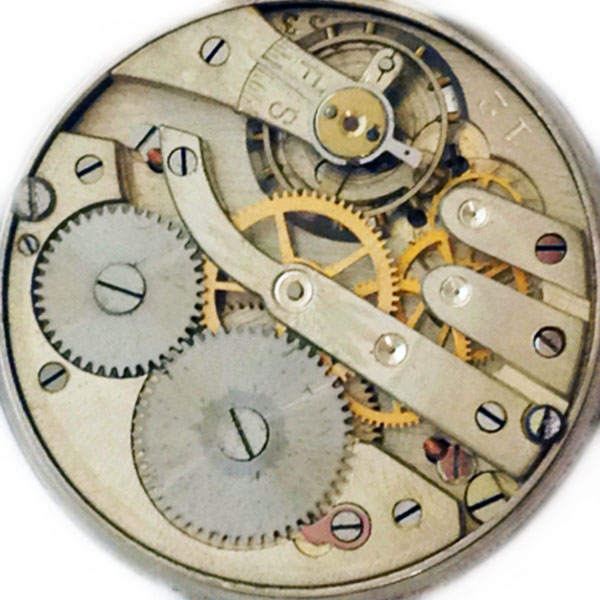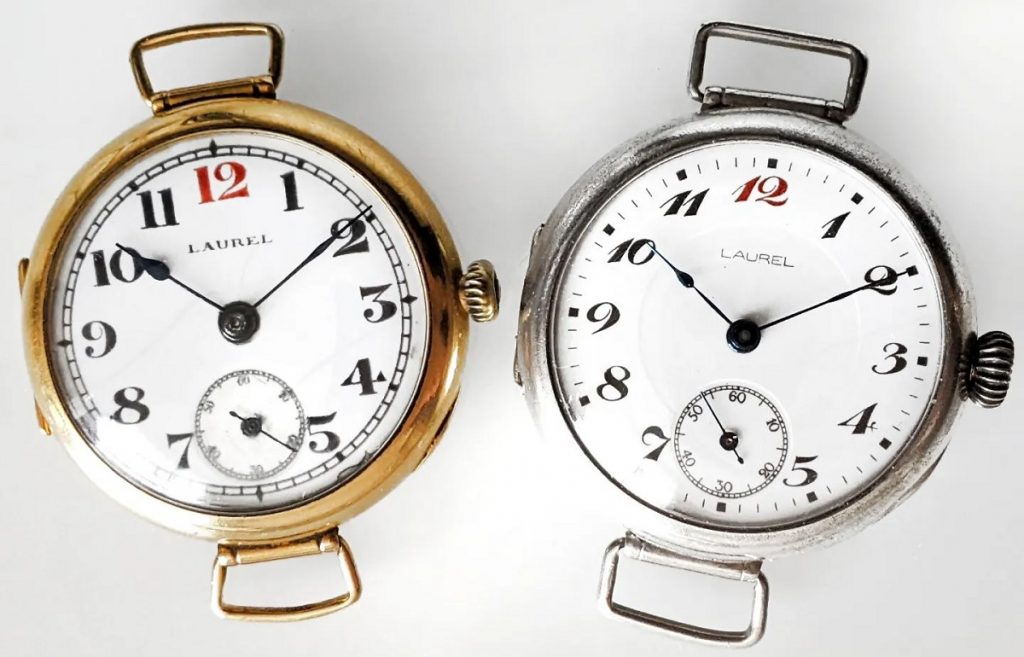
History of the Laurel
At a time when pocket watches dominated the scene, Kintaro Hattori, the founder of Seiko, realized that the wind was changing and decided to start the production of wristwatches.
The Laurel was introduced around 1913 and is considered the first Japanese wristwatch, although its movement was originally designed for small pocket watches.
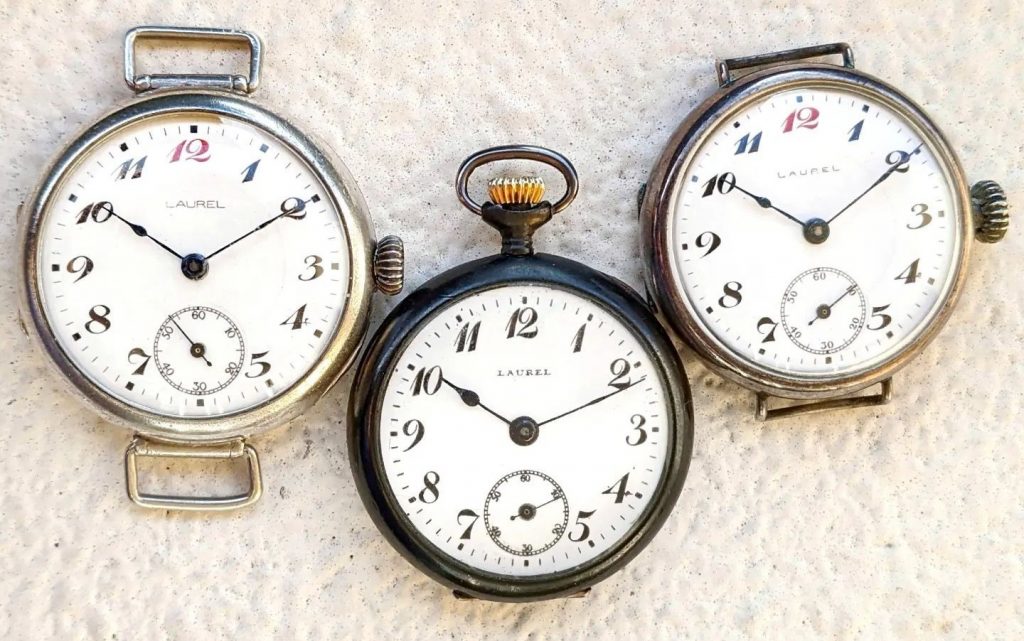
With the tools of the time, manufacturing and assembling components much smaller than usual was not easy. The production of the Laurel was a major challenge for Seiko, which allowed the Japanese company to develop new techniques and sophisticated machinery.
It is said that, at least at the beginning, they were only able to produce a few dozen Laurels per day.
In those years, wristwatches were rare also in Europe, but they were used by soldiers during the First World War (1914-1918), and subsequently steadily growth in popularity.
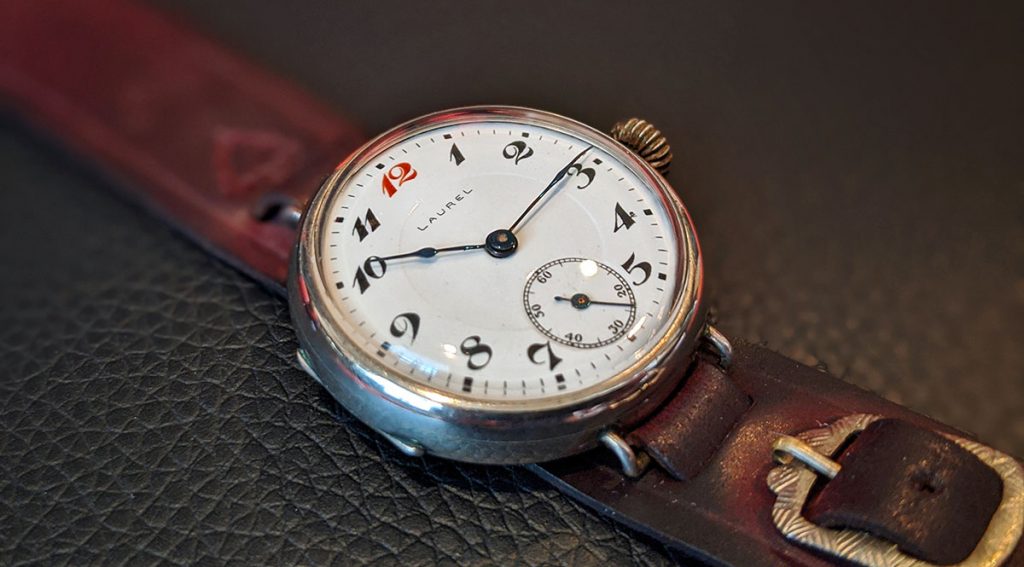
On the following page, extracted from a catalog of the time, you can see two versions of the Laurel wristwatch on the left, and a Laurel pocket watch on the right.
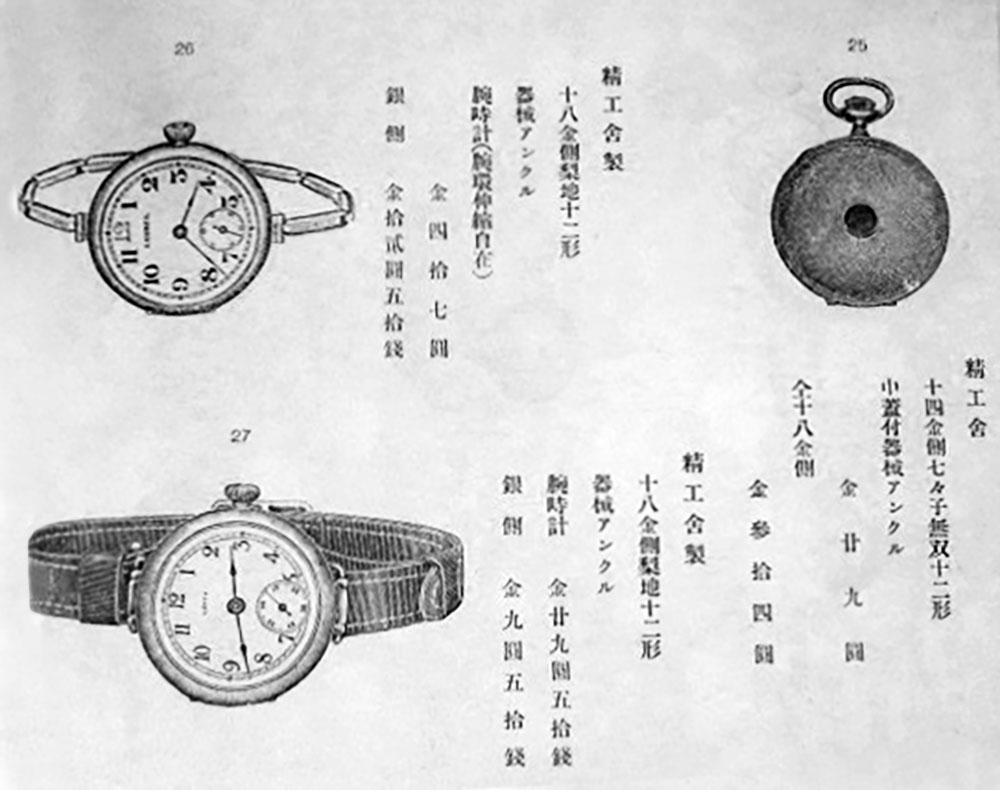
It can be seen that, even if the models shown on this page are all Laurel, the one in the lower left has the writing “Lofty” on the dial.
Specifications
| Aliases | Laurel, Lofty |
| Year | 1913 |
| Type | Manual winding mechanical |
| Jewels | 7, 10 |
| Bph | 18,000 |
| Movement size | 12 ligne (26.2 mm diameter) |
| Case material | Silver 18k yellow gold Nickel Shakudō |
Dial
The Laurel sports an elegant enamel dial, like many watches of the same era. The enamel is practically immune to the effects of humidity, but it can develop some cracks, which are quite common on surviving examples.
There are many different versions of the dial, some of which can be seen in the following photo, combined with different types of cases.
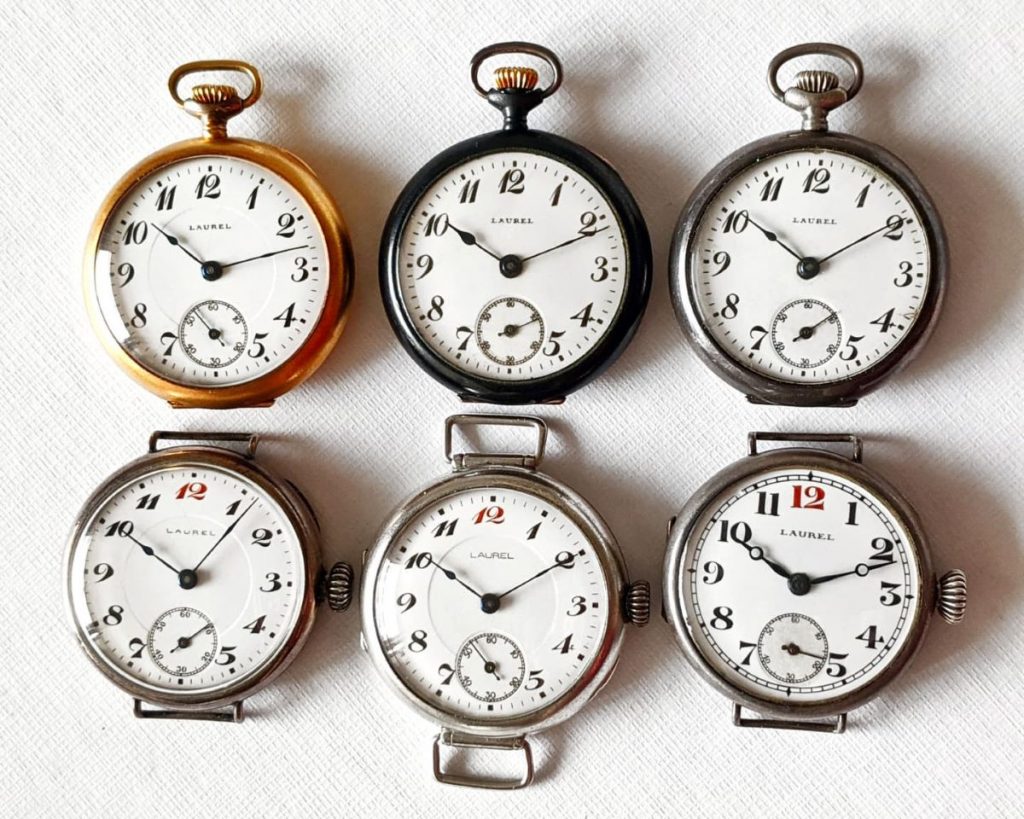
The red 12 index appears to be more common in Laurel wristwatches, while pocket watches almost always feature a black 12 index.
A few different fonts and minute scales were used, and it can be seen that some dials were flat while others were stepped.
The Laurel shown in the photo below is a specimen from the Seiko Museum in Tokyo.
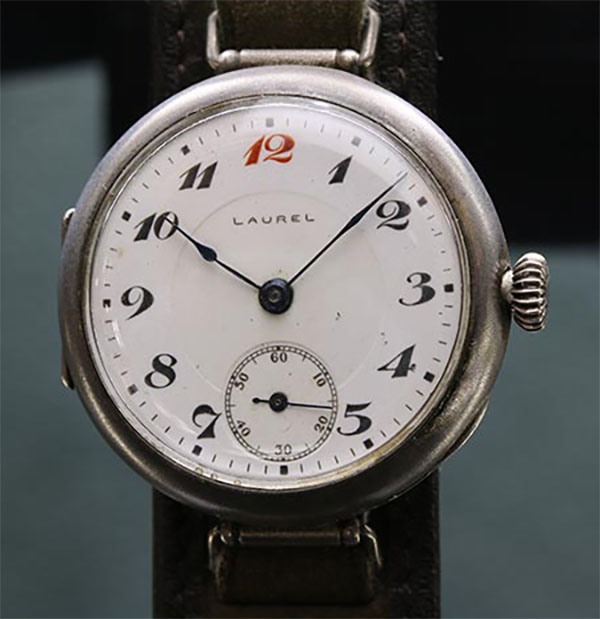
Case
The Laurel was marketed with many different cases, but it is important to notice that, among the examples that can be seen today, many use third-party cases, which have been replaced to the original ones damaged by time and wear. The Laurel watches still in existence with the original case are rare.
The most authoritative sources suggest that the first version of the Laurel had a swing lugs case, called “Senbai” (専売).
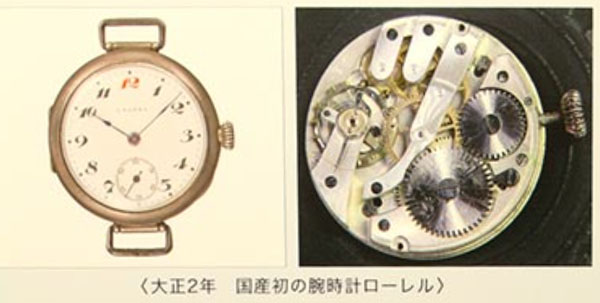
This case is made up of 3 main parts, and is very similar to pocket watches of that era. Some specimens have decorative engravings, usually with flowers or natural landscapes.
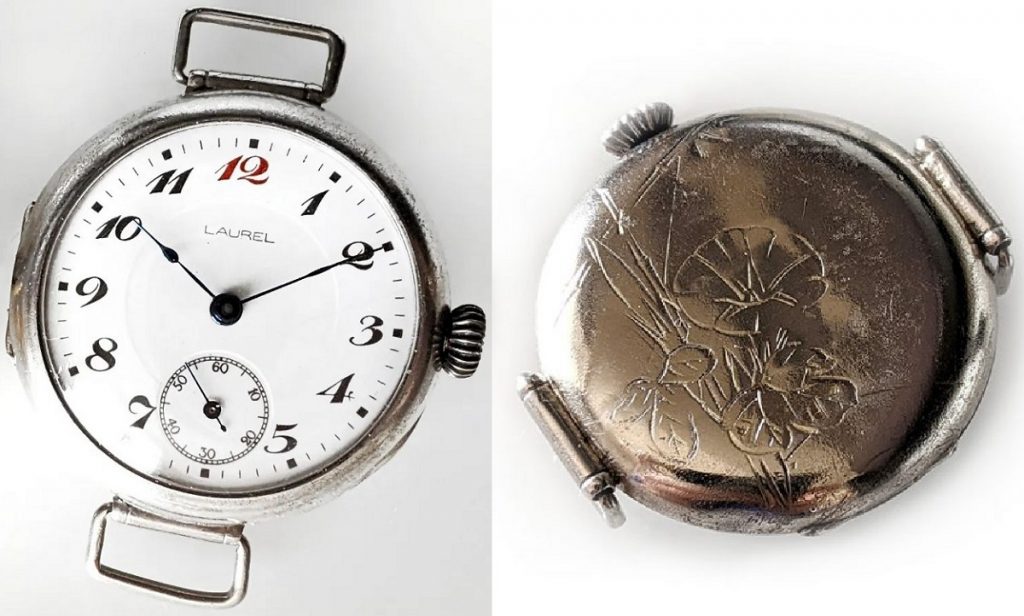
Inside the case we find the fan-shaped “SKS” logo, here accompanied by “0,900” because the material is silver. We also find a serial number, which does not follow modern Seiko standards: the first two digits do not represent the year and month of production.
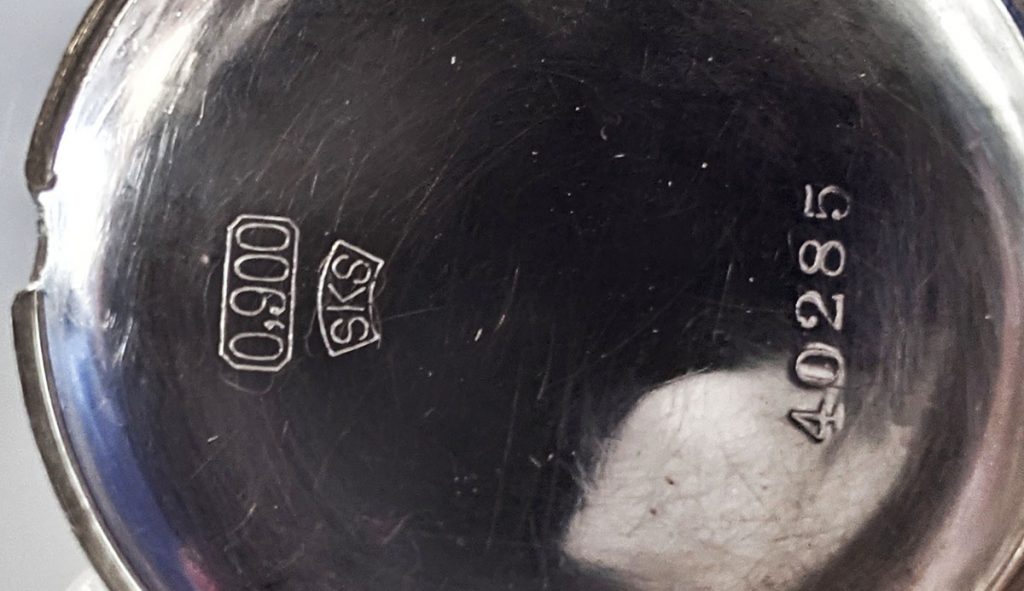
The following is a 18-karat gold version of the Senbai case, which I can show you thanks to the kindness of the watch collector Tito Ogami (Instagram: @tito_ogami).
Inside the case we see again the SKS logo, followed by 18k which indicates the gold carat, and the serial number.
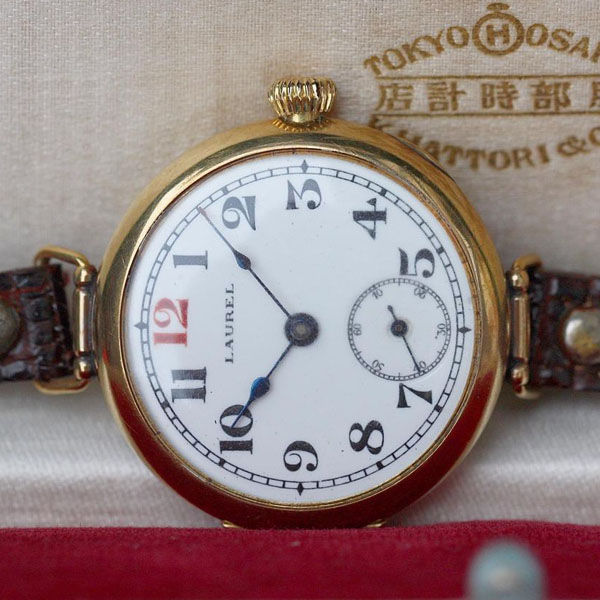
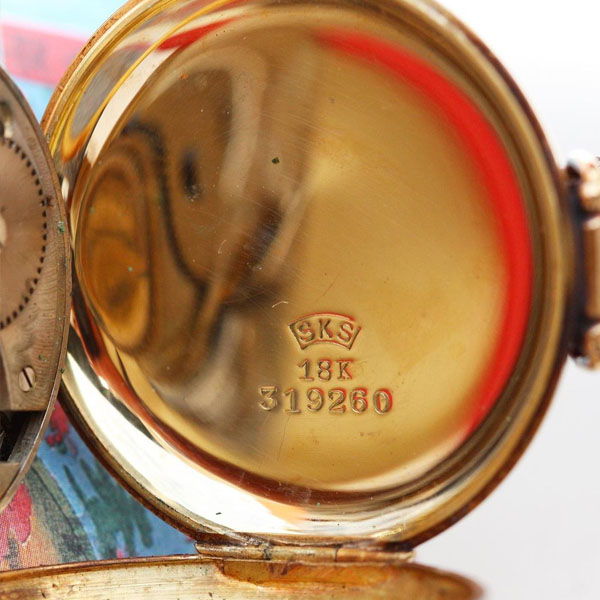
The third example of a Senbai case is made of shakudō (赤銅), a Japanese billon of gold and copper.
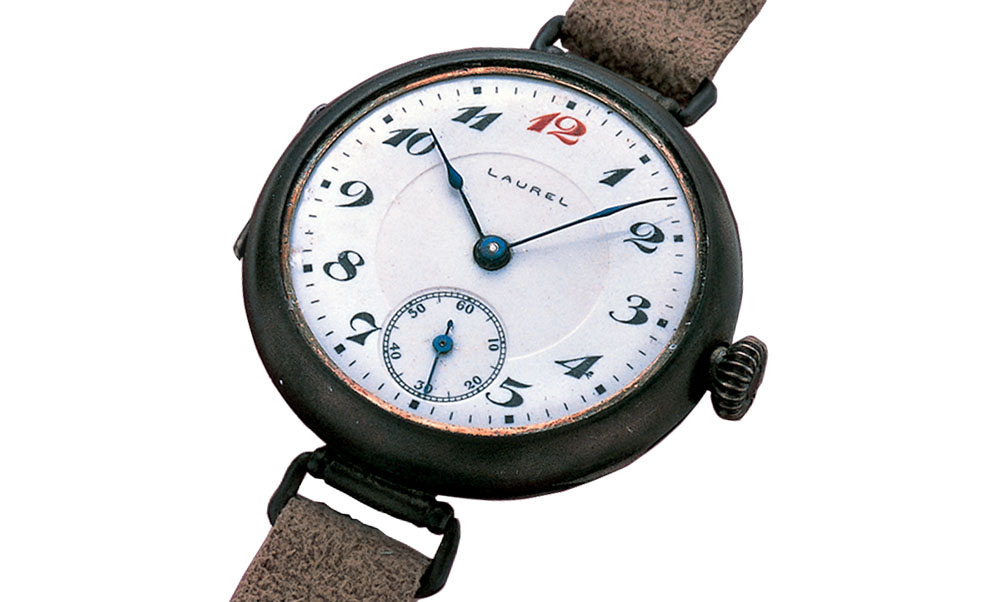
We then find another type of case, with fixed lugs.
Again, inside the case we find the fan-shaped SKS logo and a serial number.
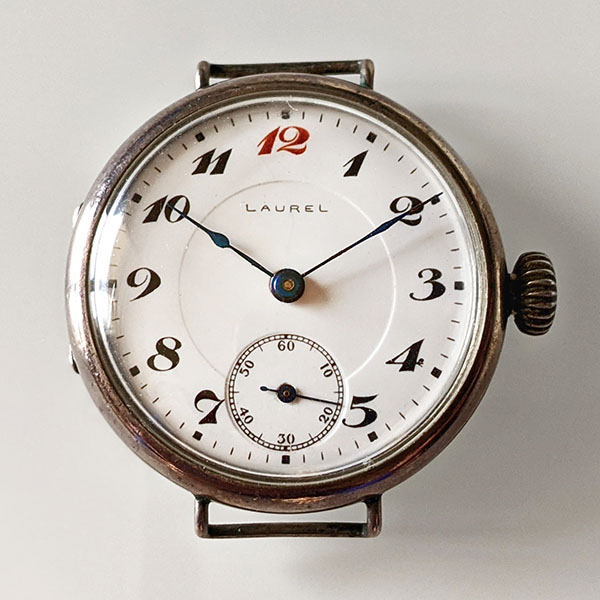
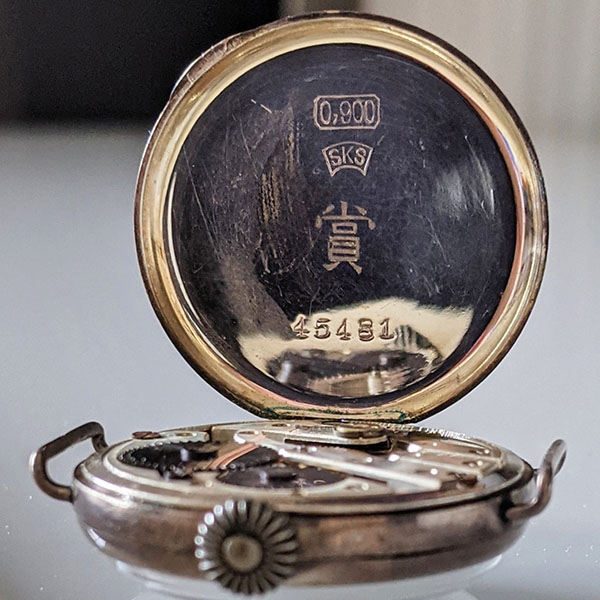
In this silver specimen, which I had the opportunity to purchase at a Japanese auction, in addition to the symbols expected to be engraved inside the case, I found the Japanese character “賞” (Shō), which symbolizes an award or a gift.
A gift for what? It is not known. For whom? I have no idea.
It is probably a mystery that will never find an answer, but it adds even more value to a watch that already has an amazing story to tell.

There is another version of the case with fixed lugs, almost identical to the silver one, but in nickel, a material that will become widely used by Seiko for wristwatches produced in the 1920s and 30s.
To date, I am not aware of any original specimen with a fixed lugs case made of gold, however I don’t rule out its existence.
Among pocket watches we also find many different types of case.
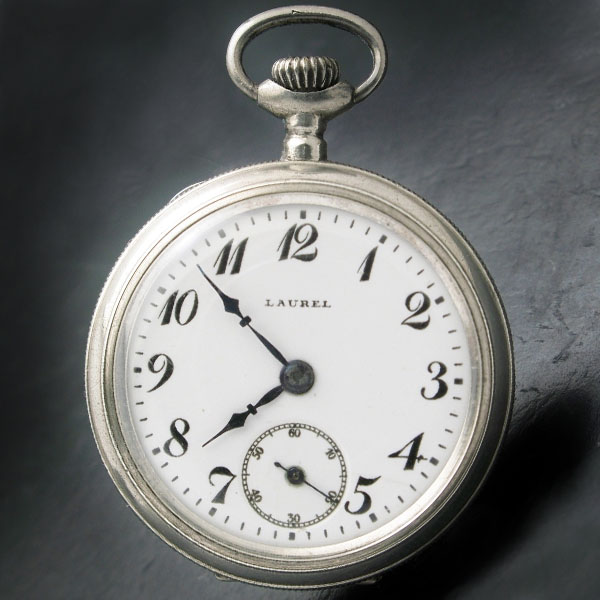
Photo adapted from Yahoo Auctions
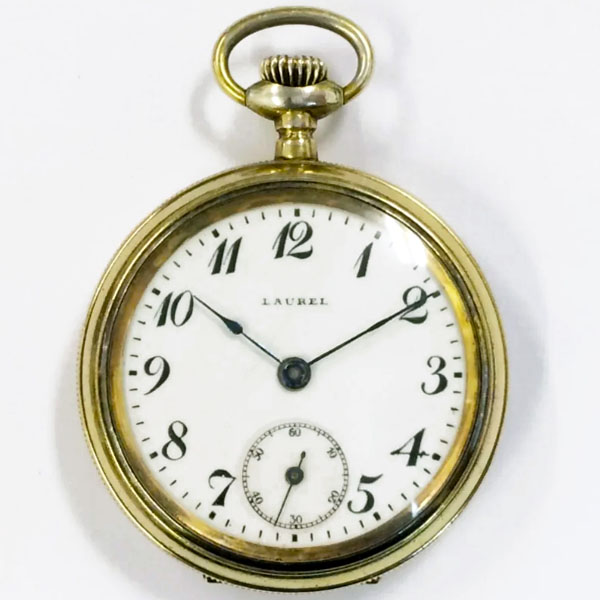
Photo adapted from Yahoo Auctions
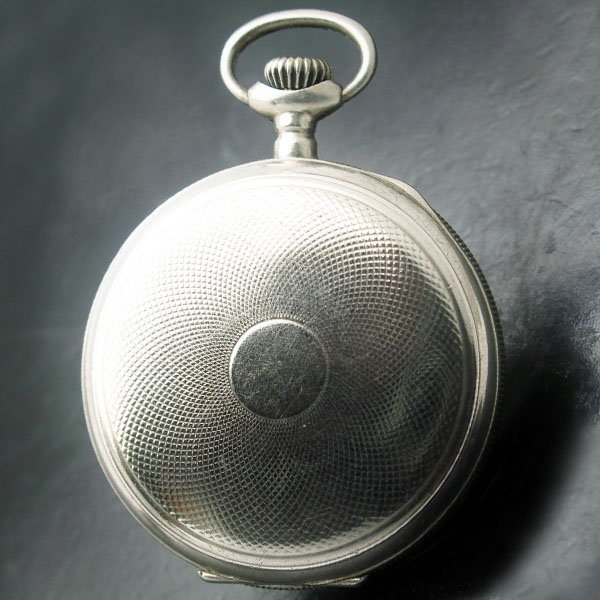
Photo adapted from Yahoo Auctions
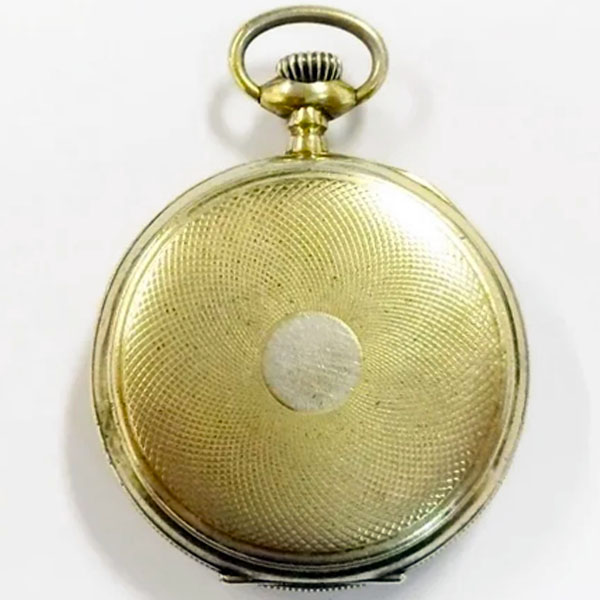
Photo adapted from Yahoo Auctions
The next example in 18k solid gold is of the hunter type, with a front cover, and has the crown positioned at 3 o’clock.
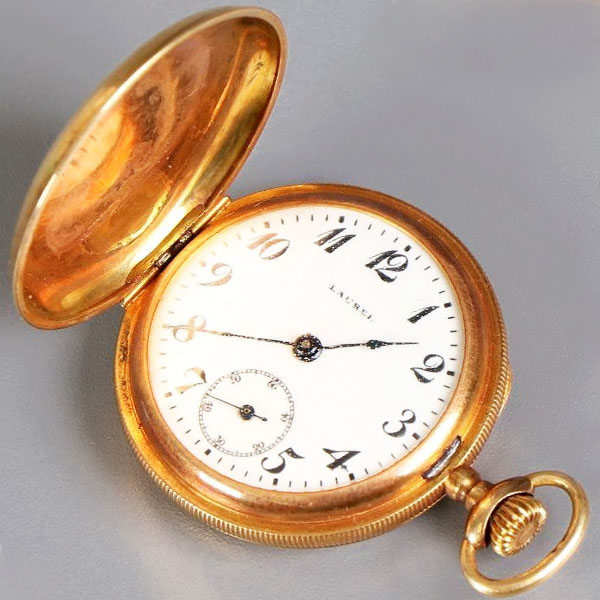
Photo adapted from Yahoo Auctions
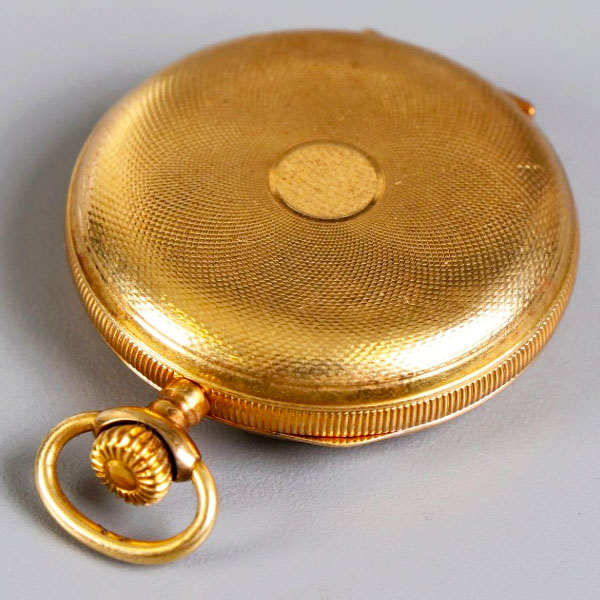
Photo adapted from Yahoo Auctions
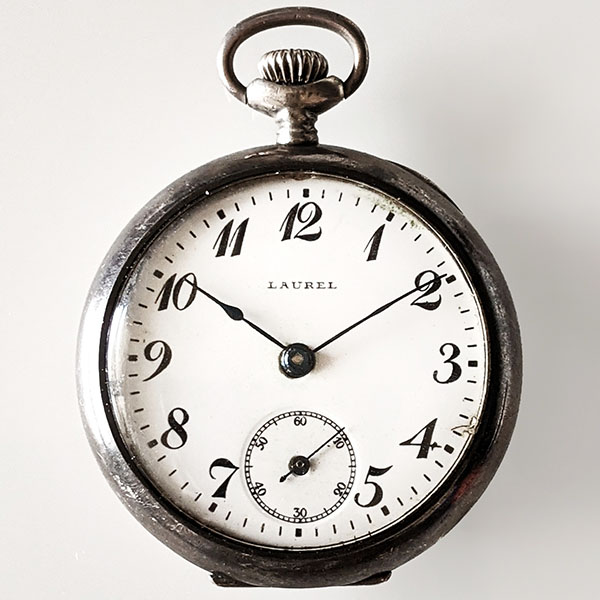
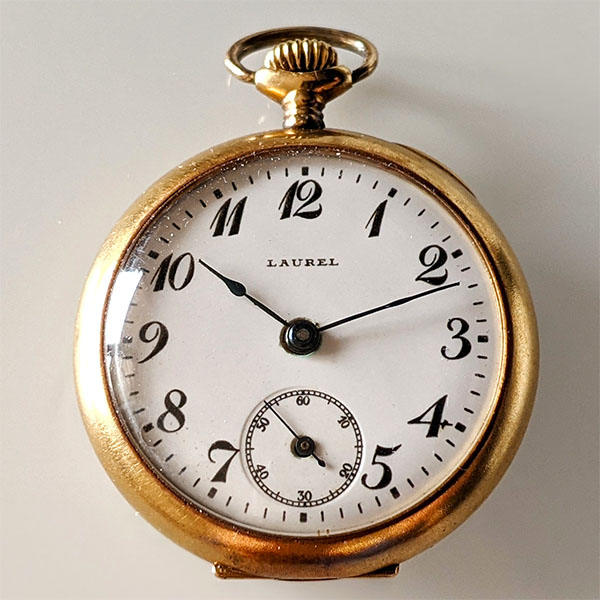
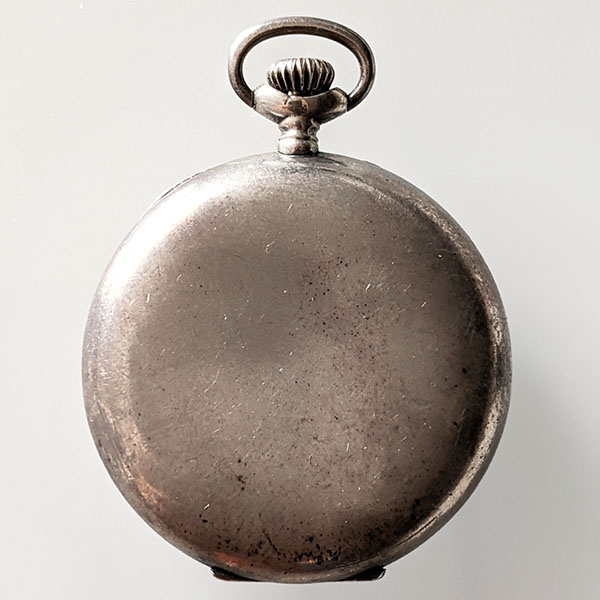
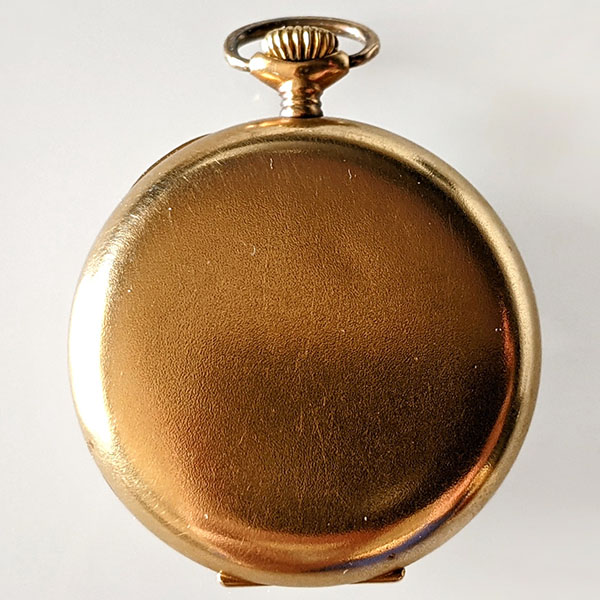
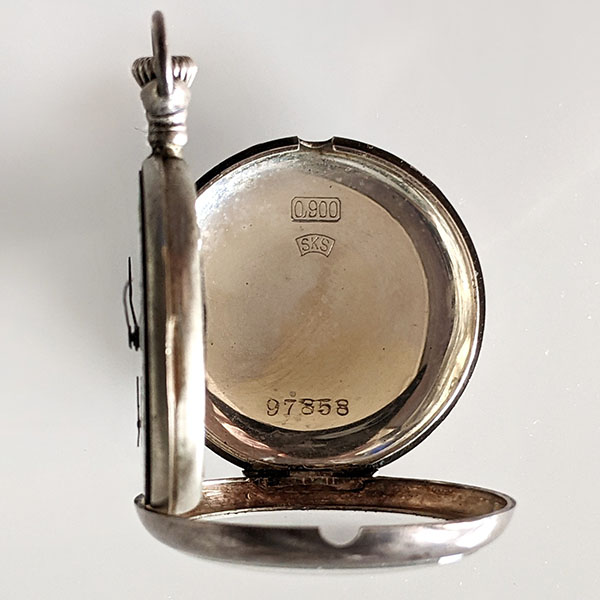
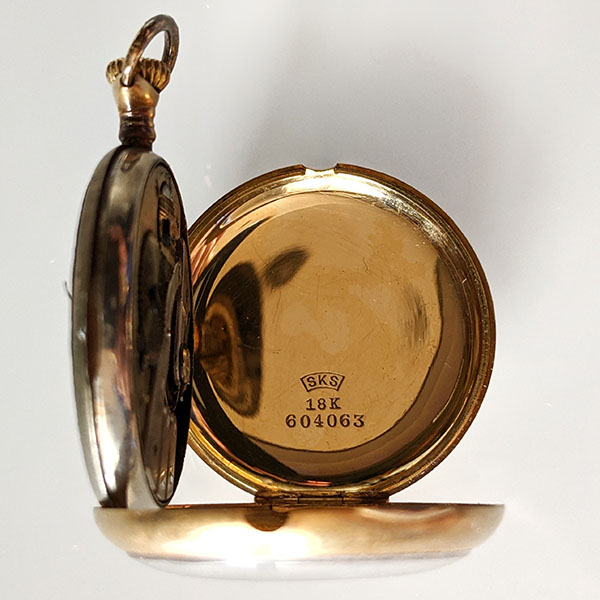
Finally, here is the version with a front cover of the second type of case. The specimen depicted is made of 18-karat gold.
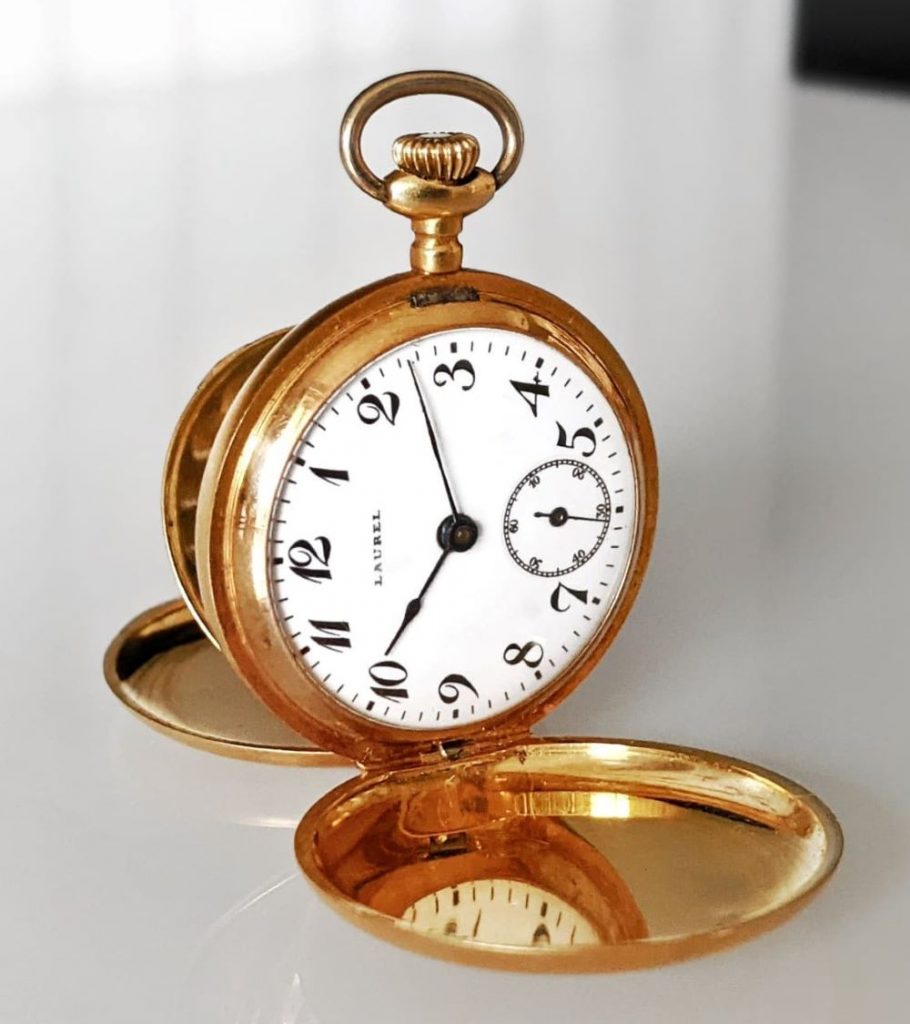
Movement
It is said that the Laurel movement was probably based on the Swiss A. Schild 55, but it appears that its components were produced, wholly or in large part, by Seiko in Japan.
It operates at 18,000 bph and has a diameter of 26.2 mm (12 lignes). Most of the examples have 7 jewels, but there is also a version with 10 jewels.
In this video you can see the movement in action. More than 100 years old, and it still keeps good time without missing a beat.
The difference between the movements for wrist and pocket Laurel watches is immediately visible, due to the different position of the crown.
The comparison shows how the original design was intended to have the crown at 12 o’clock. To move it to 3 o’clock it was necessary to “cut” a part of the bridge in the center of the movement, so as to allow the repositioning of the crown wheel and the ratchet wheel.
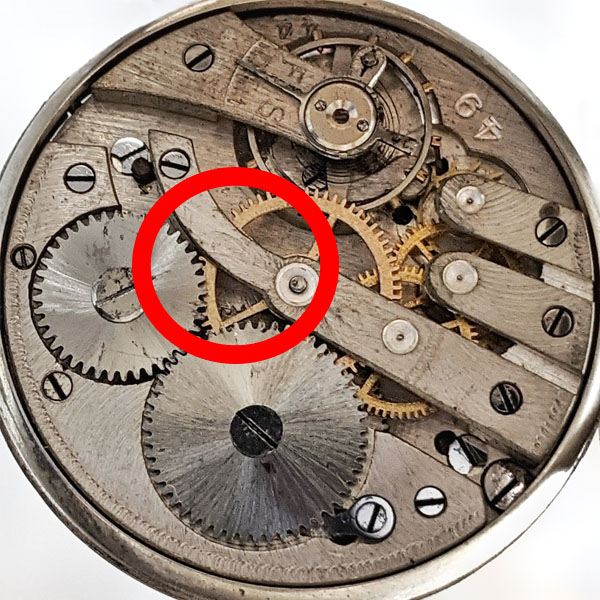
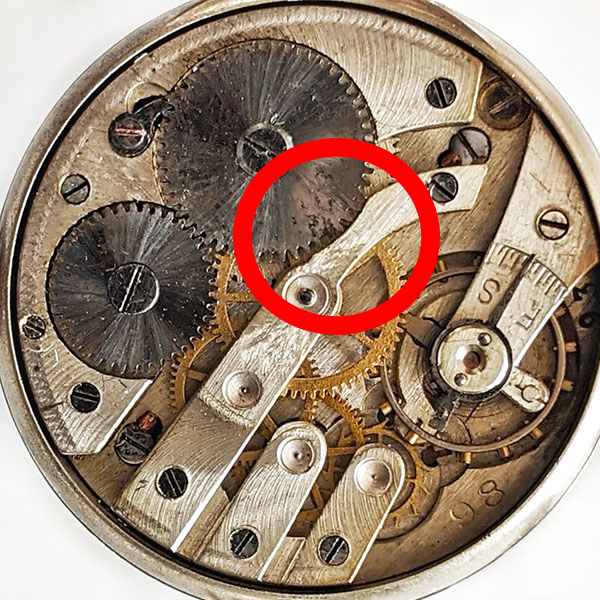
It is also possible to notice a series of small differences between the movements, due to the period of production or the type of case on which the movement was mounted.
In the following photos you can see some differences between two Laurel wristwatches: the different position of the screws to fix the movement to the case, and the shape of the ratchet. These distinctions are present in both the wrist and pocket versions.
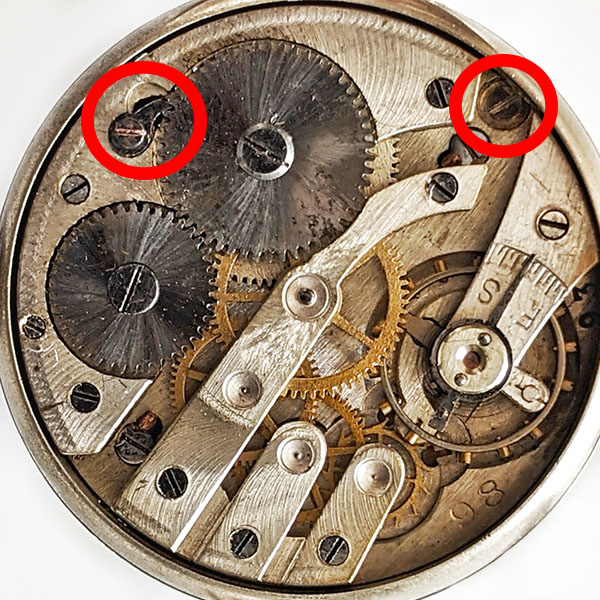
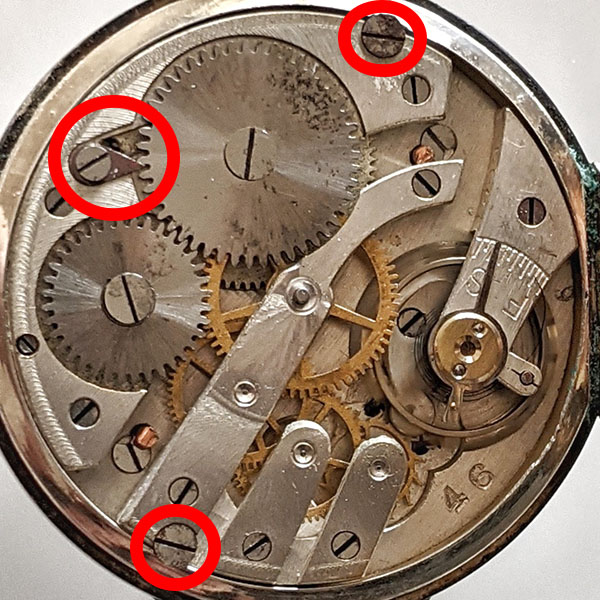
The following images show a few variations of the Laurel movement.
